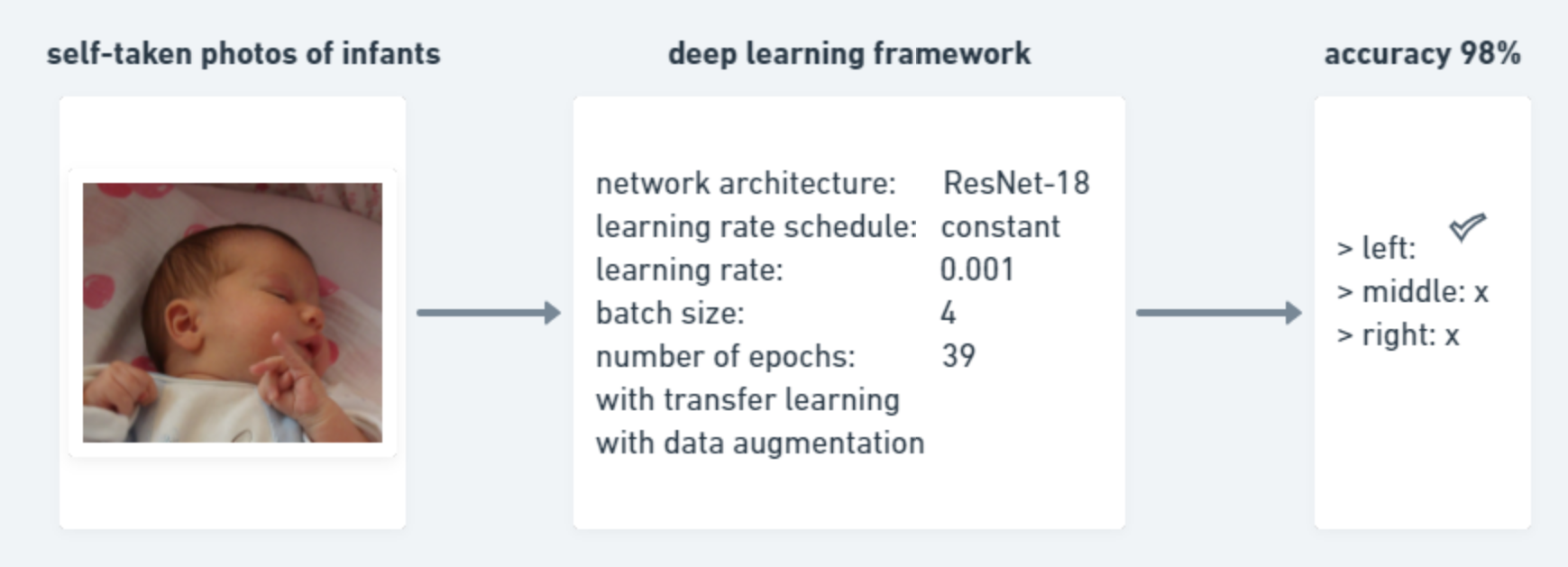A Deep Learning Framework for Early Detection of Plagiocephaly
Aim and Research Question(s)
The aim of this thesis is the development of a prototype to measure the position of the head of infants between one week and six months in the supine position using a deep learning framework.
Background
The number of infants with plagiocephaly is increasing [1]. Plagiocephaly is a skull asymmetry that can occur during assisted labor or be caused by a congenital muscular torticollis. Regardless of the cause, lying in the supine position can exacerbate the skull deformity. If diagnosed too late, this head asymmetry can cause numerous negative health consequences. At the moment, there is no technical solution for early detection of plagiocephaly.
Methods
To create an adequate framework to detect the infant’s head position, photos from infants in the supine position were gathered. The classification algorithm was trained with transfer learning from the dataset ImageNet, and data augmentation was used. A suitable network architecture was found, and the hyper-parameters of learning rate schedule, batch size, and epochs were fine-tuned to achieve a higher accuracy than a random classifier.
Results and Discussion
The fine-tuned framework for predicting an infant’s head position showed an accuracy of 98 percent. This was achieved by using the ResNet-18 architecture with a constant learning rate schedule, a learning rate of 0.001, and 39 epochs.
 Figure 1: The accuracy with the fine-tuned deep learning framework with the self-taken photos of infants achieved 98 percent.
Figure 1: The accuracy with the fine-tuned deep learning framework with the self-taken photos of infants achieved 98 percent.
Conclusion
Despite a relatively small data set, of around 1000 images, the accuracy achieved in this deep learning framework is high. Therefore, it is ready to be used for early detection of plagiocephaly in further projects.
References
[1] F. Shweikeh, M. Nuño, M. Danielpour, M. D. Krieger, and D. Drazin, “Positional plagiocephaly: An analysis of the literature on the effectiveness of current guidelines,” eng, Neurosurgical Focus, vol. 35, no. 4, E1, Oct. 2013, issn: 1092-0684. doi: 10.3171/2013.8.FOCUS13261.
